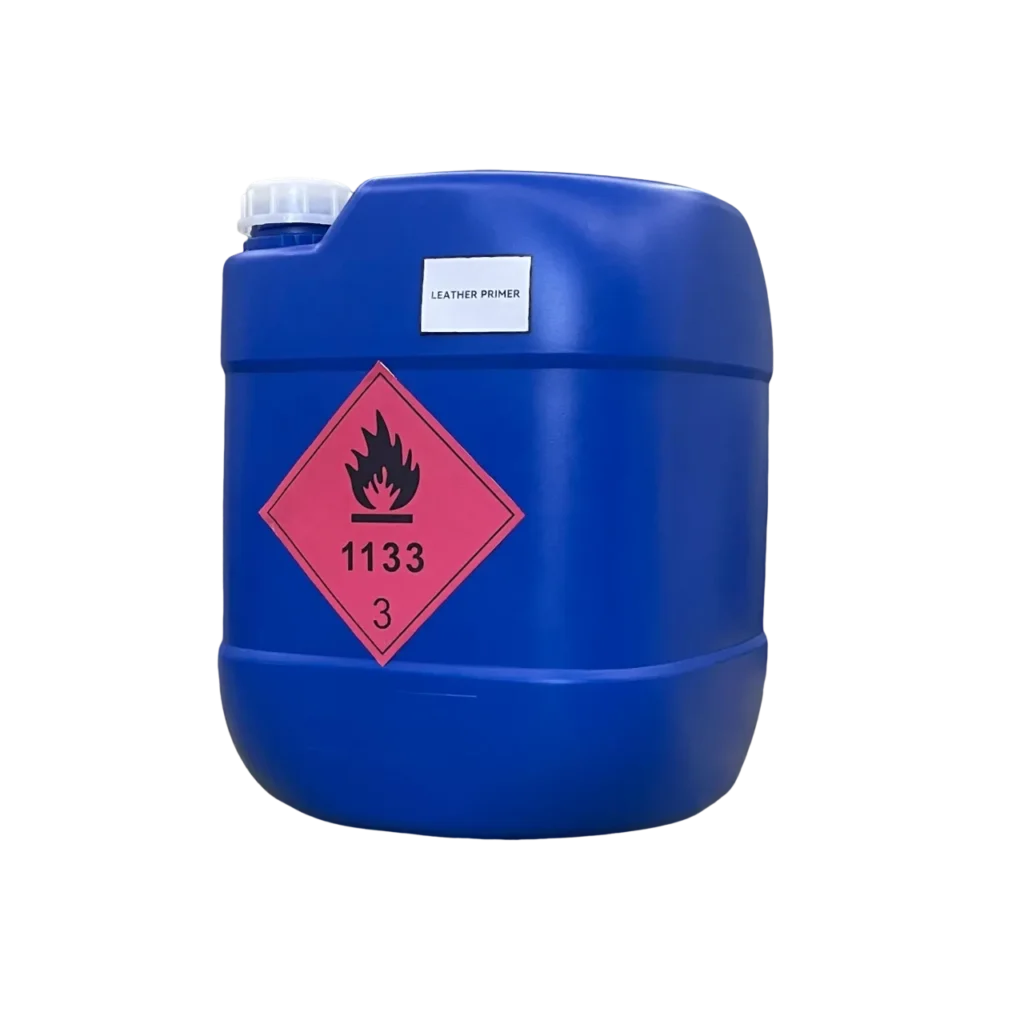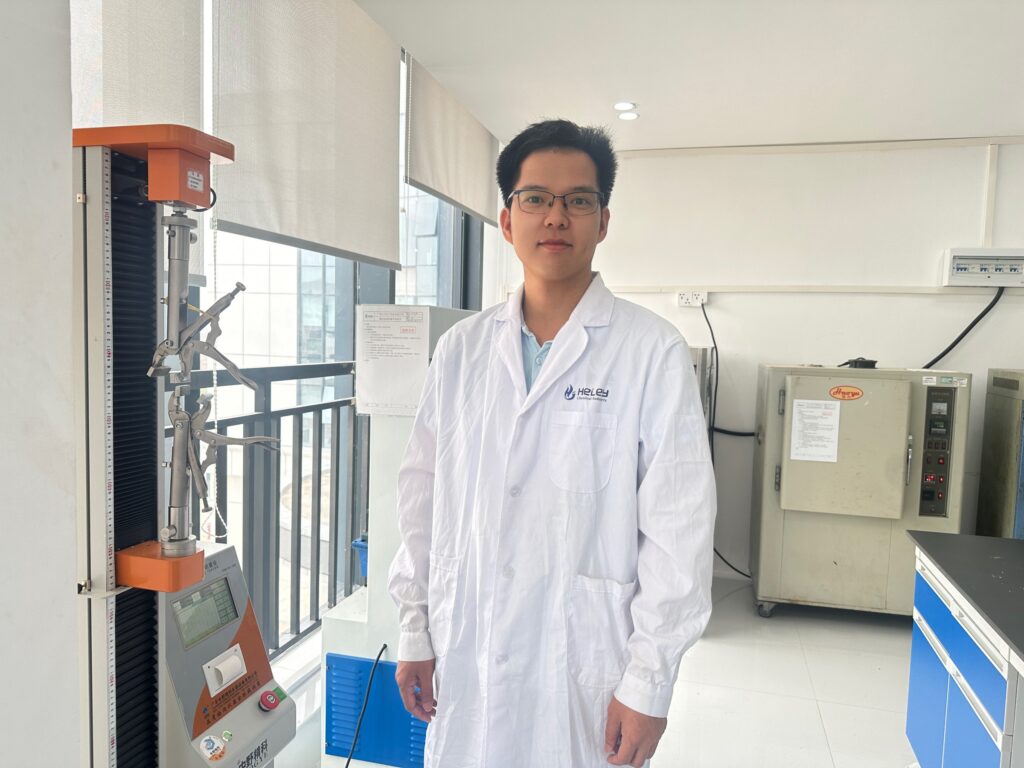
Leather primer is a specially formulated solution designed to enhance the adhesion of adhesives to leather surfaces. Leather, with its natural oils and variable texture, can sometimes be challenging to bond directly using standard adhesives. Leather primer helps by conditioning the surface, improving adhesive grip, and ensuring a stronger, more durable bond. This makes it an essential step in the process of footwear manufacturing, leather goods production, and leather repair.
Chemical Composition: Typically made with solvents and active bonding agents that prepare the leather surface for better compatibility with adhesives such as polyurethane, chloroprene, or epoxy.
Drying Time: Dries quickly, usually within 5-10 minutes depending on ambient temperature and humidity.
Viscosity: Low viscosity, allowing for easy and even application with brushes or spray systems.
Temperature Resistance: Effective in a range of temperatures from 10°C to 35°C, suitable for most manufacturing and repair environments.
Shelf Life: Approximately 12-18 months when stored in a cool, tightly sealed container.
Specific Use Cases: Ideal for prepping leather surfaces before bonding them with soles, patches, or other leather pieces in footwear and leather goods manufacturing.
Industry Use: Widely used in the production of leather shoes, bags, belts, automotive interiors, and upholstery, as well as in leather repair shops.
Materials Compatibility: Formulated specifically for use on natural and synthetic leather but can also be effective on other smooth, porous surfaces like suede or nubuck.
Enhanced Adhesion: Improves bonding strength between leather and adhesives, reducing the risk of delamination over time.
Easy Application: Smooth application with a brush or sprayer ensures even coverage without pooling.
Quick Drying: Allows for a faster production cycle, making it ideal for high-volume manufacturing environments.
Consistency: Helps create a uniform bonding surface, reducing variations in adhesive performance across different pieces of leather.
Long-Lasting Bond: Prepares the leather surface to ensure that the adhesive forms a bond that remains durable and flexible, even with regular wear and use.
Surface Preparation: Clean the leather surface thoroughly with a suitable leather cleaner to remove oils, dust, and any finish coatings.
Apply Primer: Using a brush or sprayer, apply a thin, even coat of leather primer to the bonding area.
Drying Time: Allow the primer to dry for 5-10 minutes until the surface is no longer tacky to the touch.
Apply Adhesive: Once the primer has dried, apply the selected adhesive to the prepared surface.
Bonding: Press the surfaces together firmly as directed by the adhesive instructions, ensuring even pressure for a secure bond.
Safety Precautions: Use gloves and eye protection to prevent skin and eye contact. Avoid direct inhalation of fumes.
Ventilation Requirements: Work in a well-ventilated area, especially when applying large quantities, to ensure proper air circulation.
Disposal Instructions: Dispose of unused primer and containers according to local environmental regulations; do not pour into water systems.
Storage Guidelines: Store in a cool, dry place, tightly sealed to prevent evaporation and maintain product integrity.
Sustainability Initiatives: Available in low-VOC formulations, reducing impact on indoor air quality and the environment.
Recyclability: Packaged in recyclable containers, supporting eco-friendly disposal practices.
Non-Toxic Formulas: Some versions are designed with less harmful solvents, providing safer alternatives for sensitive environments.
Problem: Adhesive does not adhere well to the primed leather.
Solution: Ensure the primer has fully dried before applying the adhesive, as a damp primer may reduce bond strength.
Problem: Primer leaves a residue on the leather surface.
Solution: Apply a thinner layer of primer and use a high-quality brush to ensure even coverage.
Problem: Uneven drying of primer.
Solution: Apply the primer in a controlled environment with consistent temperature and humidity levels to ensure uniform drying.
Common adhesives in footwear manufacturing include PU adhesives, grafted adhesives, chloroprene adhesives, spray adhesives, and synthetic rubber adhesives, each suited for specific applications.
Choose adhesives based on compatibility with shoe materials, such as leather, fabric, or rubber, considering factors like flexibility and durability. You can also contact our team for more details.
Solvent-based adhesives provide strong bonds and fast drying times, while water-based adhesives are more environmentally friendly and easier to clean.
Adhesive performance can be affected by climate; extreme temperatures or humidity may impact drying times and bond strength.
Safety precautions include working in a well-ventilated area, wearing gloves and masks, and following the manufacturer’s guidelines.
The shelf life of footwear adhesives typically ranges from 6 months to 2 years, depending on storage conditions and formulation.
If you need customized product or technical support, please click the button below. Our expert will come back to you within 24 hours.


